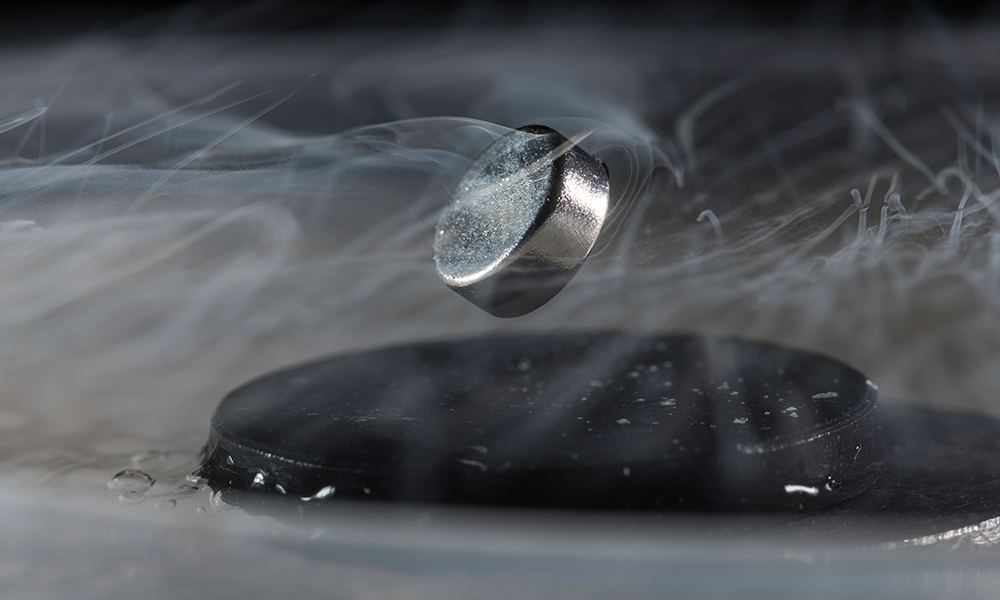University of Rochester October 14, 2020
A team of researchers in the US (University of Rochester, industry, University of Nevada) reported superconductivity in a photochemically transformed carbonaceous sulfur hydride system, starting from elemental precursors, with a maximum superconducting transition temperature of 287.7 ± 1.2 kelvin (about 15 degrees Celsius) achieved at 267 ± 10 gigapascals. The superconducting state was observed over a broad pressure range in the diamond anvil cell. Superconductivity was established by the observation of zero resistance, a magnetic susceptibility of up to 190 gigapascals, and reduction of the transition temperature under an external magnetic field of up to 9 tesla, with an upper critical magnetic field of about 62 tesla. Raman spectroscopy was used to probe the chemical and structural transformations before metallization. The introduction of chemical tuning within the ternary system could enable the preservation of the properties of room-temperature superconductivity at lower pressures…read more. TECHNICAL ARTICLE
Nature podcast

…Currently, extreme cold is required to achieve superconductivity, as demonstrated in this photo from Dias’s lab, in which a magnet floats above a superconductor cooled with liquid nitrogen. Credit: University of Rochester photo / J. Adam Fenster